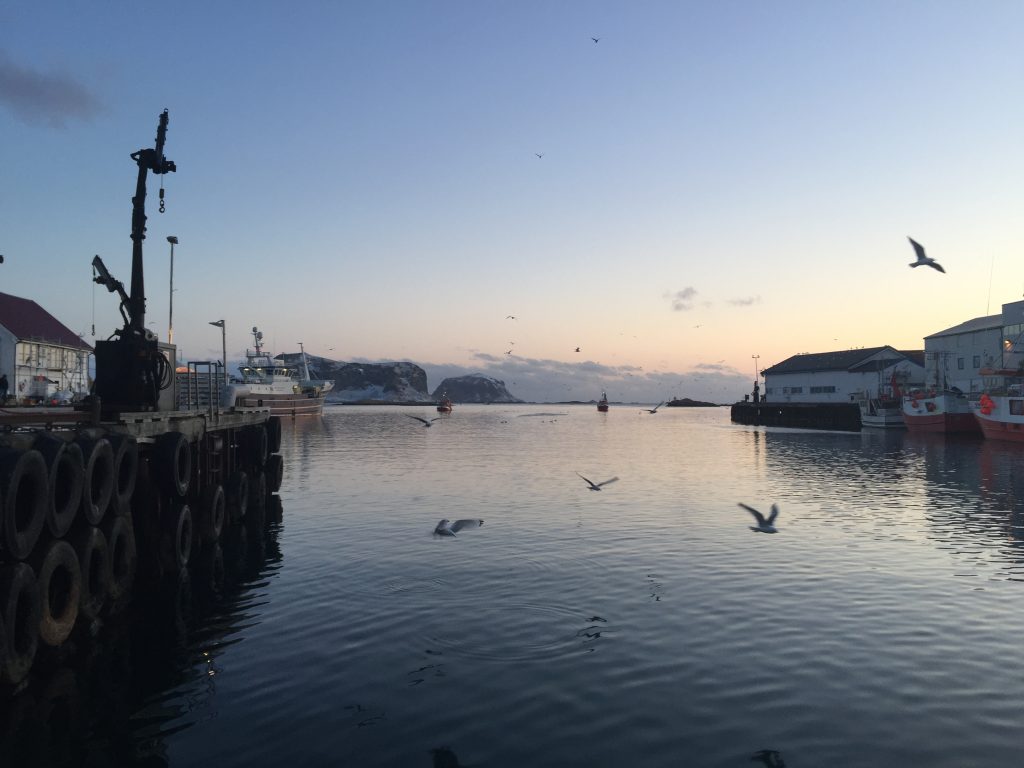Figure above: Lofoten fishery, at the island Røst, taken by Olav Kjesbu, 2018
Authors: Kjesbu, O. S., Sundby, S., Sandø, A. B., Alix, M., Hjøllo, Solfrid S., Tiedemann, M., Skern-Mauritzen, M., Junge, C., Fossheim, M., Thorsen Broms, C., Søvik, G., Zimmermann, F., Nedreaas, K., Eriksen, E., Höffle, H., Hjelset, Ann M., Kvamme, C., Reecht, Y., Knutsen, H., Aglen, A., Albert, O. T., Berg, E., Bogstad, B., Durif, C., Halvorsen, K. T., Høines, Å., Hvingel, C., Johannesen, E., Johnsen, E., Moland, E., Skuggedal Myksvoll, M., Nøttestad, L., Olsen, E., Skaret, G., Skjæraasen, J. E., Slotte, A., Staby, A., Stenevik, E. K., Stiansen, J. E., Stiasny, M., Sundet, J. H., Vikebø, F., & Huse, G.
In this work, assessing the impacts of climate change on fishing resources in the Northeast Atlantic (50 – 80°N), the 43 co-authors from the Institute of Marine Research, Norway applied a hybrid solution of the “expert scoring” and mechanistic approach to address how climate change impacts local stocks in three different ecosystems, the North Sea, Norwegian Sea and the Barents Sea. The main result, as reflected in the title, is that that cold-temperate stocks at the southern fringe of the study area as well as Artic stocks are threatened under on-going climate change, whereas warm-temperate stocks together with cold-temperate stocks in the northern subarea thrive, for now.
This comprehensive effort, following a series of introductory courses and workshops, also included the review of 799 research report and articles and the production of stock narratives, detailed in the 208-pages, on-line Supporting Information. The addressed 39 stocks – referring to 36 species – contributed in 2018 (the last year with a complete fisheries statistics table) to 84% of all landings in this highly productive part of the world’s oceans. Most researchers involved were stock assessors, regularly overseeing the productivity of each single stock, but also members within climate and biogeochemical modeling, marine ecology and physiology were very much involved. So, a true interdisciplinary approach. Both the first and second author of this article – a contribution to IMBeR Grand Challenges I and II – were earlier in the IMBeR Scientific Steering Committee.
Read more here
